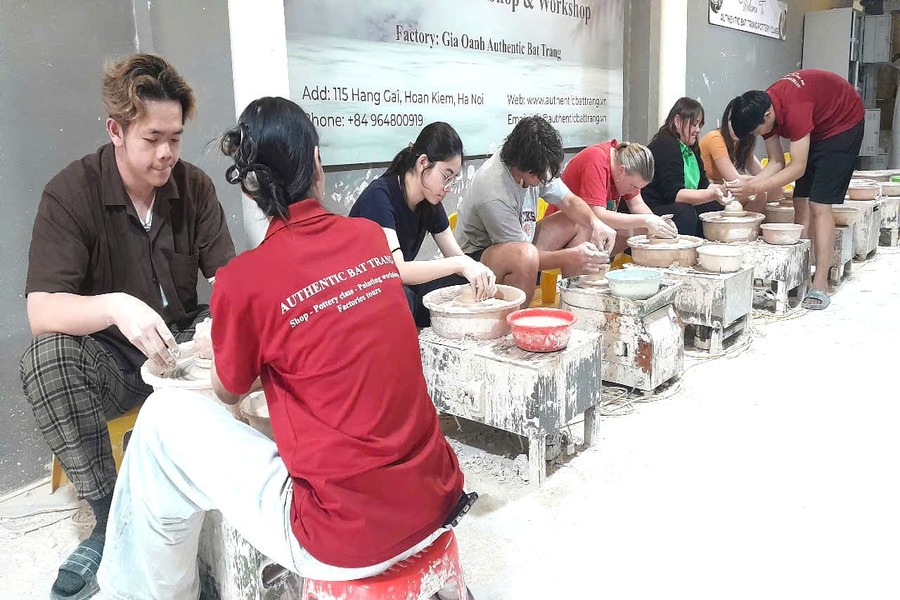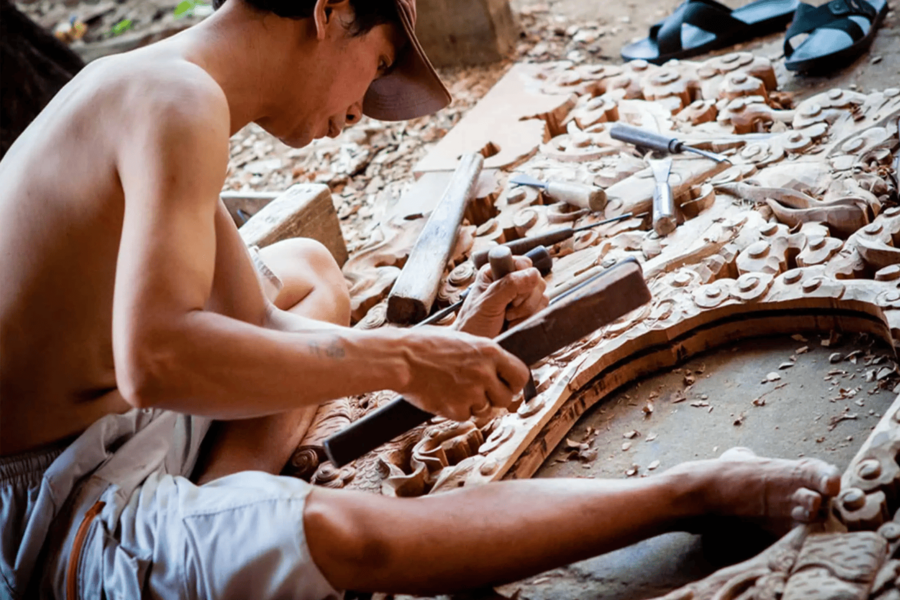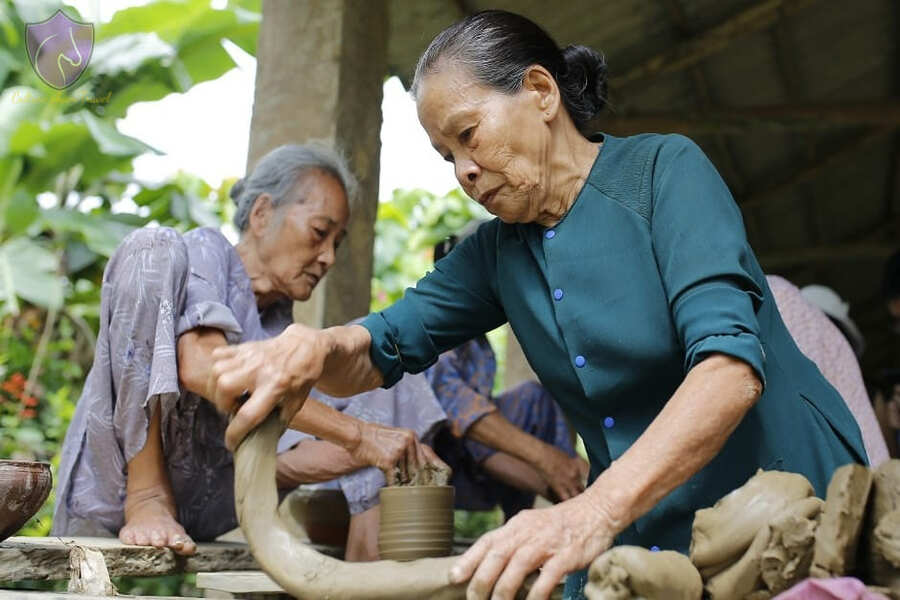Vietnam’s rich cultural tapestry is woven with the artistry of its traditional craft villages, where artisans have honed their skills for generations. While the Mekong Delta floating markets captivate with their vibrant river trade, craft villages in Vietnam offer an equally immersive experience, showcasing time-honored techniques in ceramics, silk weaving, and woodworking. From the pottery kilns of Bat Trang to the silk looms of Van Phuc, these villages invite travelers to engage hands-on with Vietnam’s heritage. This guide highlights five must-visit traditional craft villages, each a cultural gem, offering workshops, historical insights, and authentic souvenirs.
Discovering Must-Visit Craft Villages of Vietnam below
1. Bat Trang Ceramic Village
Bat Trang Ceramic Village is a cornerstone of Vietnam’s craft heritage, renowned for its exquisite pottery since the 14th century. Artisans mold clay into intricate vases, teapots, and decorative tiles, fired in traditional kilns. Visitors can join workshops to try hand-painting ceramics or shaping clay on a potter’s wheel, creating unique souvenirs. The village’s bustling market offers everything from delicate tableware to ornate sculptures. Guided tours reveal the history of Bat Trang’s craft, blending artistry with cultural storytelling. Easily accessible by motorbike or bus from Hanoi, Bat Trang is a must-visit for anyone on Vietnam & Cambodia tours seeking a hands-on connection to Vietnam’s artistic roots.

2. Van Phuc Silk Village
Van Phuc Silk Village, located 10 km from Hanoi in Ha Dong, is famed for its shimmering silk fabrics, crafted for over 1,000 years. The rhythmic clack of looms fills the air as artisans weave intricate patterns for scarves, dresses, and traditional ao dai. Visitors can tour family-run workshops, try weaving, or shop for high-quality silk at local stalls. The village’s history, once supplying royalty, adds depth to the experience, with guides sharing tales of ancient trade routes. Unlike the bustling Mekong Delta floating markets, Van Phuc offers a serene, land-based cultural immersion. Visit in November for the annual silk festival, showcasing vibrant displays and live demonstrations.

3. Kim Bong Carpentry Village
Nestled in Hoi An’s Cam Kim Island, Kim Bong Carpentry Village is a haven of woodworking mastery, dating back to the 15th century. Artisans carve intricate furniture, boats, and decorative pieces, blending Vietnamese and Cham influences. Travelers can join workshops to try woodcarving or visit showrooms displaying handcrafted tables and sculptures. The village’s proximity to Hoi An’s UNESCO-listed Old Town makes it an ideal day trip, with cycling tours offering scenic routes through rice fields. Kim Bong’s blend of craftsmanship and history provides a tactile contrast to the riverine vibrancy of Mekong Delta floating markets, making it a cultural must-see.

4. Phuoc Tich Pottery Village
Phuoc Tich Pottery Village, near Hue in Thua Thien Hue Province, offers a glimpse into Vietnam’s ancient pottery traditions, thriving for over 500 years. Set along the O Lau River, this tranquil village produces rustic terracotta pots, tiles, and decorative items using age-old techniques. Visitors can participate in pottery-making workshops, learning to shape clay under the guidance of local artisans. The village’s historic houses, some over 200 years old, add architectural charm, while guided tours share stories of its royal patronage. Phuoc Tich’s serene ambiance contrasts with the lively Mekong Delta floating markets, offering a peaceful cultural retreat.

5. Chuong Village
Chuong Village, 30 km from Hanoi in Thanh Oai, is the birthplace of Vietnam’s iconic non la conical hats, crafted for centuries. Artisans weave bamboo and palm leaves into lightweight, elegant hats, essential to Vietnamese culture. Visitors can try assembling a hat in workshops, learning the delicate process from skilled locals. The village’s market buzzes with hat vendors, offering vibrant designs for souvenirs. Accessible by motorbike or local bus, Chuong provides an authentic, hands-on experience, distinct from the water-based trade of Mekong Delta floating markets. Visit during the weekly market day for the liveliest atmosphere and cultural immersion.

Practical Tips for Visiting Vietnam’s Craft Villages
- To fully experience Vietnam’s traditional craft villages, plan your visit during the dry season (November to April) for comfortable exploration. ‘Hanoi serves as a base for Bat Trang, Van Phuc, and Chuong (30-60 minutes by motorbike or bus), while Kim Bong is a short ride from Hoi An, and Phuoc Tich is near Hue.
- Bring small cash (VND) for workshop fees and souvenirs, and wear comfortable shoes for walking through village lanes.
- Respect artisans by asking permission before photographing their work.
- Book guided tours through operators like True Indochina Tours for insider access to workshops and cultural stories, ensuring a seamless, enriching experience across these artisanal hubs.
Vietnam’s traditional craft villages are living testaments to the country’s artisanal soul, offering hands-on experiences that rival the vibrancy of Mekong Delta floating markets. From shaping pottery in Bat Trang to weaving silk in Van Phuc, these villages invite travelers to create, learn, and connect with centuries-old traditions. As you craft your own ceramic bowl or conical hat, you’ll carry home not just souvenirs but stories of Vietnam’s cultural heart.

0 Comment